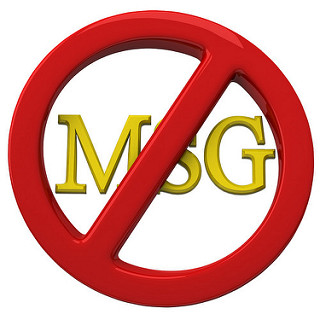Food labeling loopholes and MSG explained
Food additives are not designed to improve foods, but to aid in the production process. Due to food laws, producers of products are legally allowed to leave out certain ingredients from their labels, as long as they have fulfilled their technical functions before the food is packaged. This results in what is called “loophole labelling”, meaning they are excluded from the food labels. Industrial food procesors have responded to mounting health concerns over what exactly is in their product in two ways;
1. They often give the most unpopular ingredients new names.
2. They commonly split up certain ingredients on the label to disguise the full amount of an unfavourable ingredient.
Below is some information on MSG and some tips on how to recognise MSG hidden on food labels.
Also, for more tips and healthy recipes take a look at Trupps’ Wholefood Kitchen Cookbook.
Monosodium Glutamate (MSG)
Natural glutamate is found in almost every food. It is also found in human bones, muscles and intestines. Without it we could not exist, as glutamate is partly responsible for body growth and the regulation of body weight, appetite and fertility. Our brain needs a steady supply of natural glutamate, especially the hypothalamus, which is concerned with our emotions, reactions, hormones, temperature control, pain regulation, sleeping habits, heart function and eating behaviours.
As Glutamate is plentiful in existing foods, industrial MSG is not needed by our bodies. So why is it added to food processors to their goods? There are two reasons: it makes food taste better and it increases our appetite by stimulating saliva flow, to the point that overconsumption occurs. Needless to say, habitual overeating suits profit-motivated food companies, so they add generous amounts of MSG to various processed foods.
Unfortunately for the consumer, animal testing has shown that the presence of MSG in large amounts causes the sweeping away of cells that are responsible for vision, as well as extreme overexcitability – some rats were literally excited to death. MSG was also found to bypass the so called ‘blood brain barrier’ (the protection system that stops excess toxins from reaching the brain), and enter the hypothalamus in unnaturally large amounts. This means the over consumption of MSG could pose a significant threat to children and those suffering from Alzheimer’s or Parkinson’s disease, whose blood brain barriers are either undeveloped or damaged. It has been linked to an increased risk of multiple sclerosis, epilepsy, asthma, migraines and type 2 diabetes.
As a result of its unfavourable stigma, food producers do not like to point out the presence of MSG in their products. Instead they mix up the MSG with other ingredients or give it new names to camouflage it. These may include hydrolysed protein, vegetable protein, wheat protein, yeast extract, soy protein (isolate/concentrate), whey protein/prodcts, natural flavouring, spices, enzymes, autolysed yeast extract, stock, broth aroma, carrageenan, maltodextrin, fat-free dehydrated milk and others.
E numbers for glutamates/MSG
- Glutamatic acid (E620)
- Monosodium glutamate (E621)
- Monopotassium glutamate (E622)
- Calcium diglutamate (E623)
- Monoammonium glutamate (E624)
- Magnesium digutamate (E625)
References:
Walter & Dorota Trupp (2012), Trupps’ Wholefood Kitchen, Melbourne: Melbourne University Publishing.



